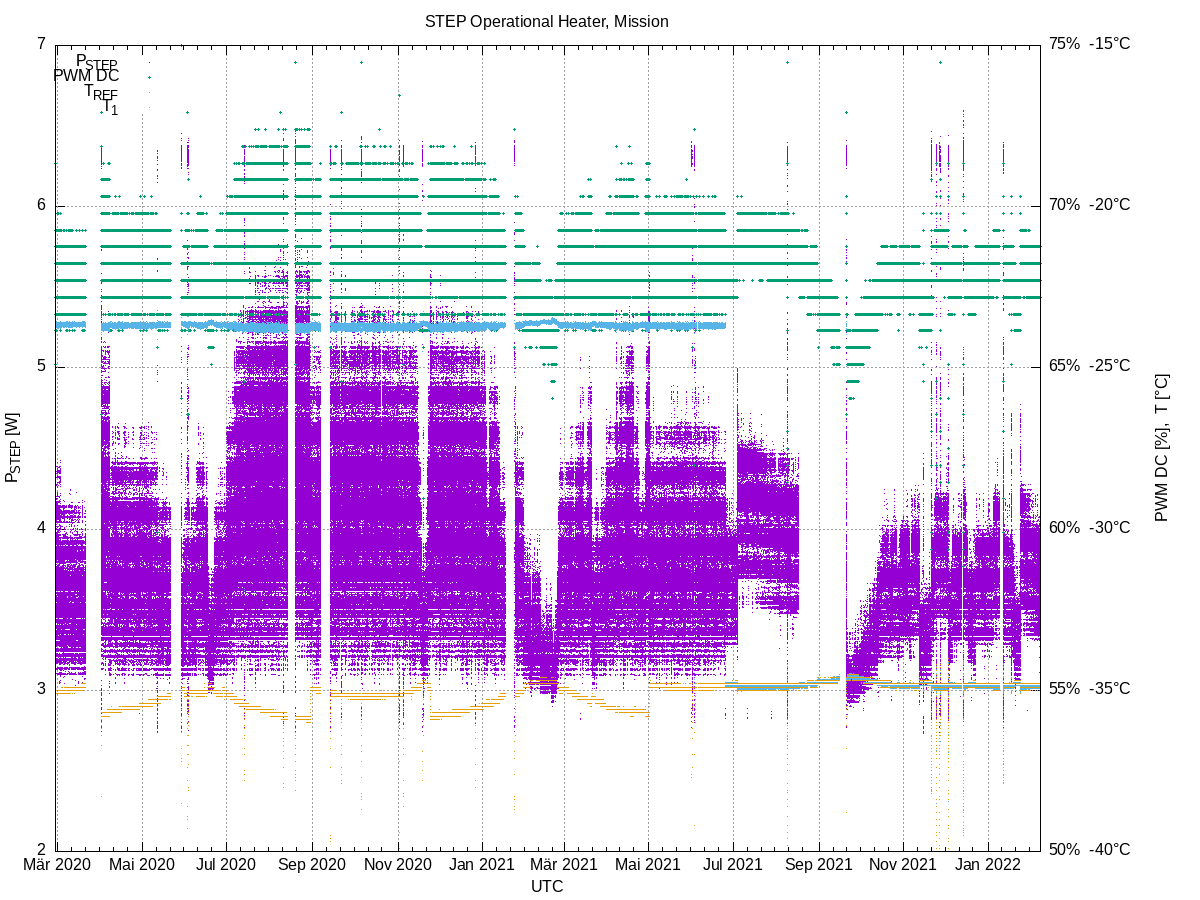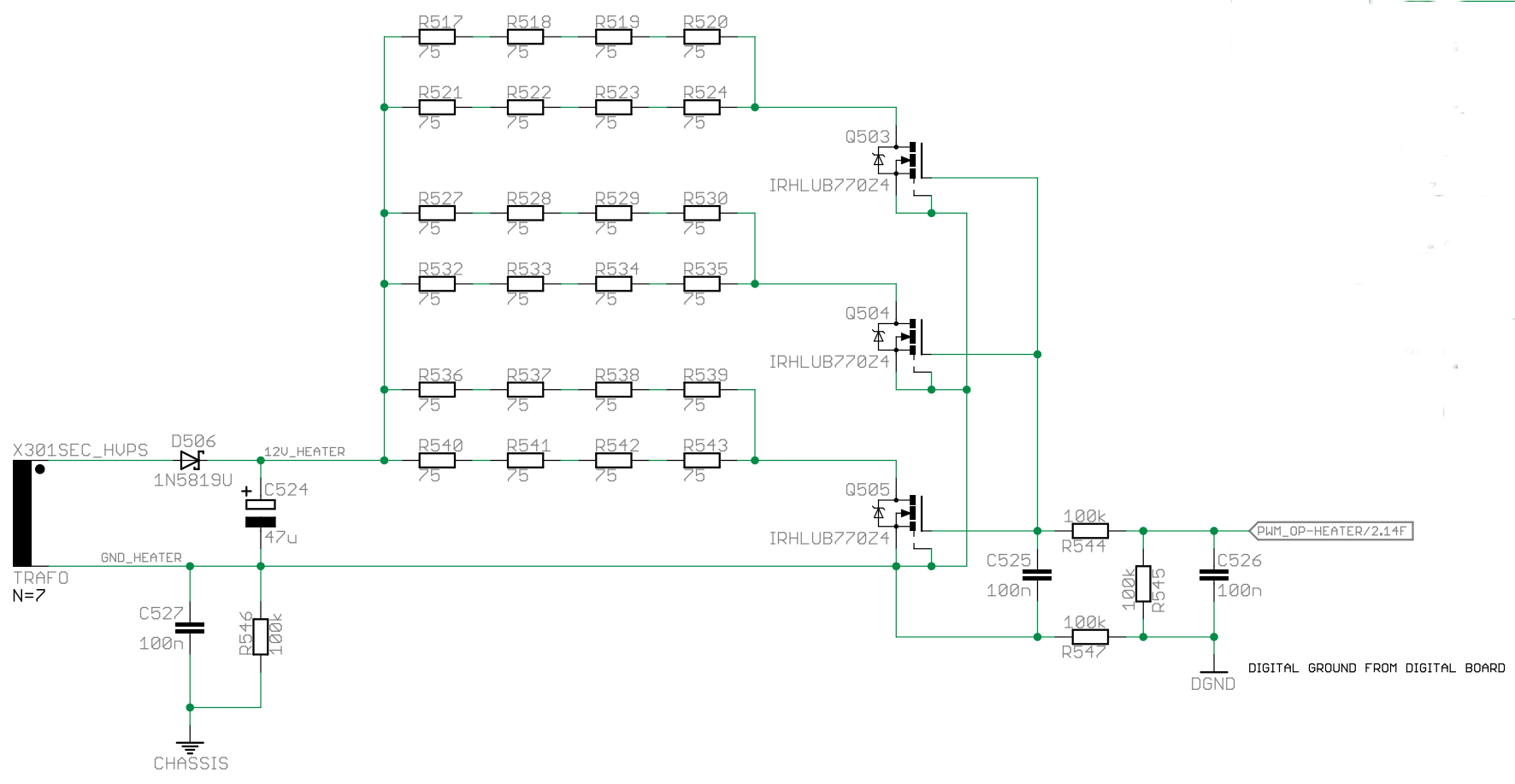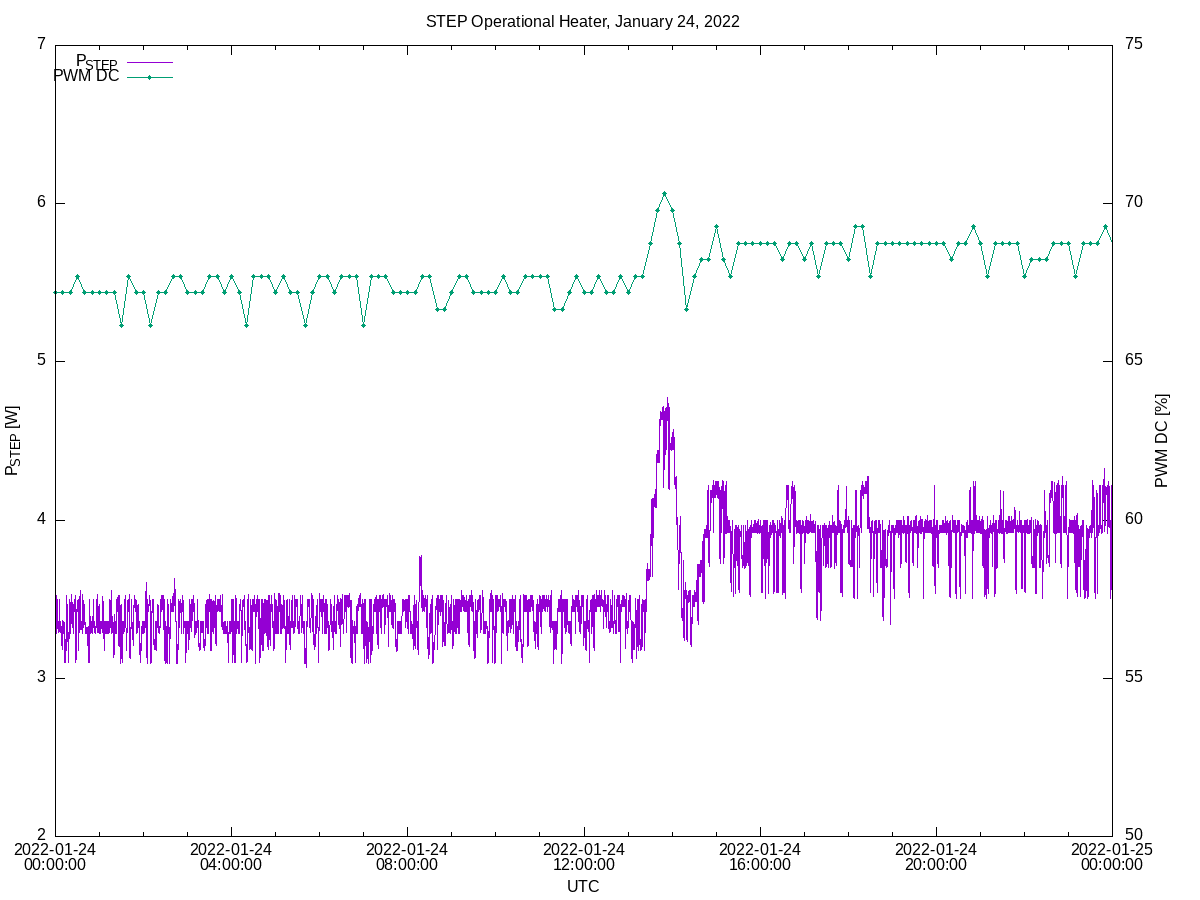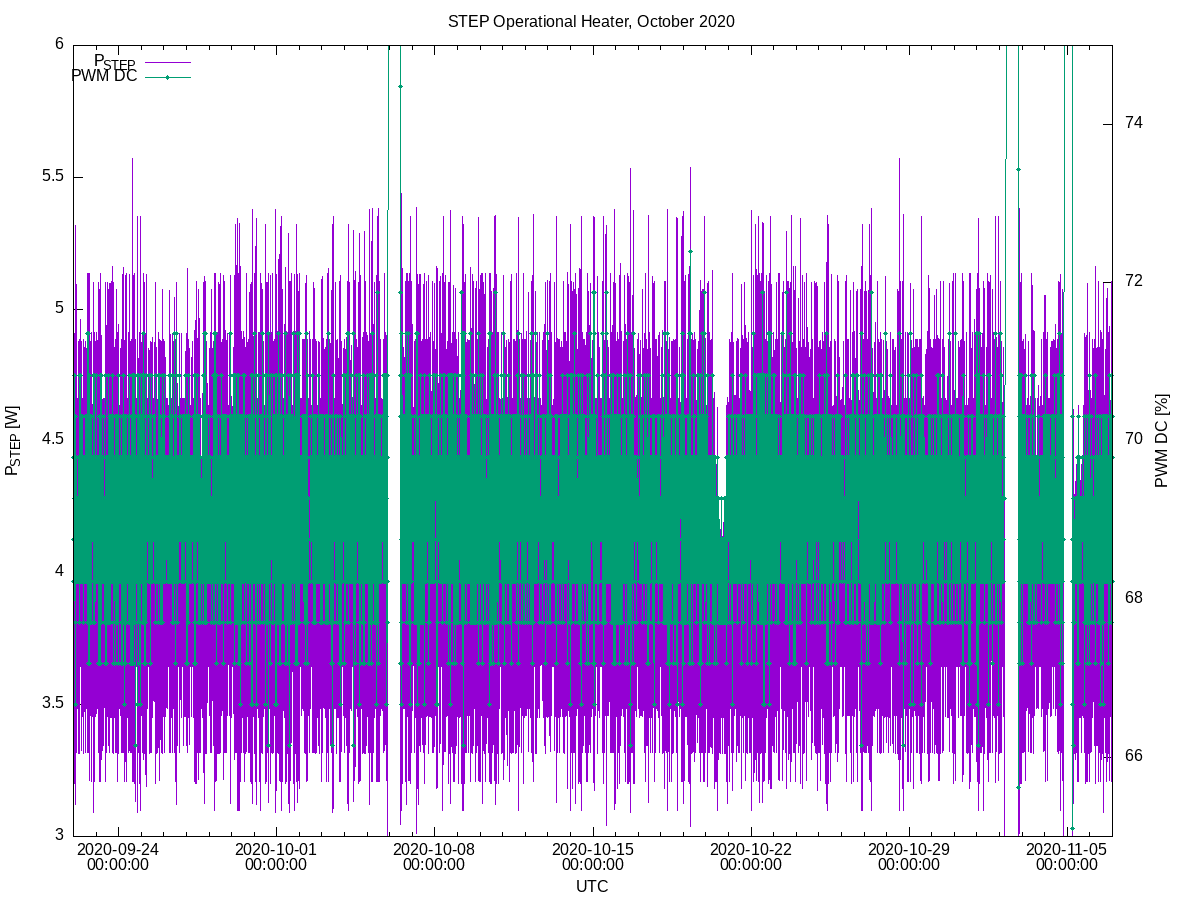STEP Operational Heater History
This data shall help evaluate if the STEP operational heater emits noise to MAG or RPW.Author: Stephan I. Böttcher
Date: 2022-02-08

- Purple:
- STEP power
- Green:
- PWM duty cycle
- Blue:
- heater reference temperature
- Yellow:
- sensor housing temperature
This picture is pretty frightening. Unfortunately, nobody paid close attention to this data up to now.
The STEP operational heater is located on the power board and consists of three MOSFETs and resistors. The heater operates with a DC current controlled by a Pulse Width Modulator that is filtered with a time constant several tens of ms. The PWM frequency is 125kHz, modulated in 24MHz/125kHz=192 steps. The filtered PWM voltage is directly applied to the gates of the MOSFETs.

(Björn Schuster)
The FPGA adjusts the duty cycle once per minute. The duty cycle is calculated as the difference between the temperature ADC reading and a setpoint. The ADC reading is a 12bit digitization of the voltage on an 10kΩ NTC biased via a 33kΩ to the ADC reference voltage. The difference can be divided by 1, 2, 4 or 8, to reduce the gain of the heater loop.
Launch configuration, plans and issues
The units were supposed to be launched with setpoints that are way below the expected temperatures. In the end, this was not the case for STEP.The STEP heater was configured to refer to a temperature sensor on the ADC board, instead of an NTC on the sensor housing. This was corrected in May 2021, as you can see on the blue graph.
We were hoping for a slowly changing thermal environment dominated by sun distance. We discovered that the thermal environment is pretty dynamic on the spacecraft. We intend to use the operational heaters to stabilize the sensor temperatures, to avoid calibration issues.
There should have been some source resistor in the heater circuits to make the heater less sensitive to the duty cycle. The heater seems to respond to duty cycle steps with power steps of 200mW on the steepest part of the curve.

The heater oscillates with a period of about a quarter of an hour. The change of the reference thermistor seems to have reduced the oscillations, although that sensor is even more distant to the heater. We plan to reduce the loop gain to see if that helps reducing these oscillations further. The graph for October 6, 2020 shows a STEP power on transition.

On January 24, 2022 the oscillations are minimal, except for some transient in the environment.
We will reconfigure the operational heater to not exceed a certain duty cycle, to limit the maximum power used during turn on or other transients.
October 2020

This is the data for October 2020, as requested. This is a period with high power and large amplitude oscillations. If these numbers correlate with MAG noise we have a problem.
Data Files:
Two sets of data files, for the whole mission and for October 2020.Timestamps are spacecraft time plus 946684800. That is UTC, assuming the spacecraft epoch is Sa 1. Jan 00:00:00 UTC 2000.
ICU_HK.power
This data is provided by the EPD ICU housekeeping.- Timestamp [s] (Unix Epoch)
- "ISTEP"
- STEP supply current [A]
- "VSTEP"
- STEP supply voltage [V]
- "IHE1"
- EPT/HET1 supply current [A]
- "VHE1"
- EPT/HET1 supply voltage [V]
- "IHE2"
- EPT/HET2 supply current [A]
- "VHE2"
- EPT/HET2 supply voltage [V]
- "ISIS"
- SIS supply current [A]
- "VSIS"
- SIS supply voltage [V]
STEP.OH
This is STEP auxiliary data, status register readout. Cadence 10 Minutes.- Timestamp [s] (Unix Epoch)
- Heater reference Temperature [°C]
- Heater PWM duty cycle [192/100%]
- Heater remaining time [8µs]
STEP.HK
This is STEP auxiliary data, HK ADC readings. Cadence 10 Minutes.- Timestamp [s] (Unix Epoch)
- "1"
- Idef-X A1
- Idef-X B1
- Idef-X A2
- Idef-X B2
- V_2.5V [V]
- T_LVPS [°C]
- V_3.3V [V]
- V_BIAS
- V_6.0V
- V_REF [V]
- I_BIAS
- T_DIG [°C]
- T_0 [°C]
- T_1 [°C]
- T_2 [°C]
- T_3 [°C]